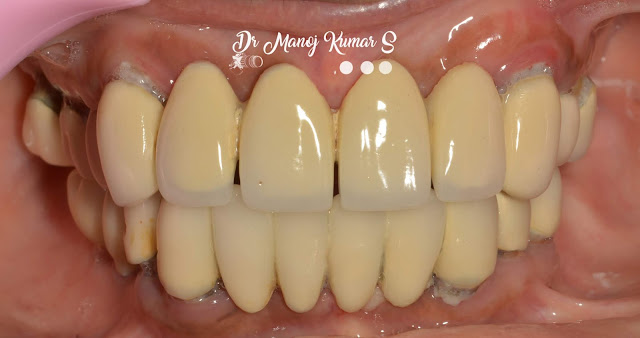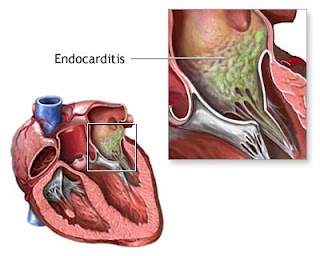removable vs fixed bridge.....
Treatment Planning for Single Missing Teeth
Single Tooth Replacement Options
Fixed Partial Denture (FPD)
Removable Partial Denture (RPD)
Interim or Transitional Partial Denture (Flipper)
Implant Supported Restoration
Resin Retained Bridge (Maryland bridge)
Cantilever Bridge
Indications for Single Tooth Replacement
Traumatically avulsed tooth
Congenitally missing tooth
Extraction of non-restorable tooth
External resorption
Removable Partial Denture
Advantages Disadvantages
·Indicated when acrylic will improve ·Requires an essential amount of metal
appearance (excessive bone loss) framework and tooth support to replace
· Least expensive one or two teeth
· Treatment of choice for patients who
have difficulty with hygiene
Fixed Partial Denture
Advantages Disadvantages
·Esthetics ·May involve irreversible preparation
·Covered at least partially by of minimally restored or virgin teeth
insurance ·Abutments susceptible to recurrent decay
·FPD feels more permanent than RPD ·Cost for remake if needs replaced
·Capable of directing forces ·Pontic emergence profile
along long axes of teeth ·Labial bone inadequacy
·Need floss threader
·Retention of diastema difficult
Transitional Partial Denture (Flipper)
Advantages Disadvantages
·provides esthetics, function and space ·no rest seats to prevent overseating,
maintenance for a limited period of can cause tissue erythema
time (may be used while implant sites ·resin subject to fracture and to imbibing
heal or as a space maintainer waiting for oral fluids
completion of growth)
·inexpensive
·may be treatment of choice for an
patient who can not sit through the
lengthy or physically trying appointments
needed to make fixed prostheses
Resin-Retained Fixed Partial Denture (Maryland Bridge)
Advantages Disadvantages
·conservation of tooth structure as ·debonding of the bridge
compared to FPD ·metal retainers may cause noticeable
·alternative to FPD for young patients darkening of abutment teeth
with large pulps ·emergence profile not as esthetic as
·alternative to implant crown for implant-supported crown
young patients who have not completed ·retention of diastema not an esthetic option
growth ·abutments can not have large carious
or large restorations
·patient can not have parafunctional habits
or poor posterior occlusion
·5-year survival rate (loss of retention)
approx 70% (Creugers, NHJ, et al : Clinical
Performance of resin-bonded bridges:
A 5-year prospective study. J Oral Rehabil 16:427,1989)
Cantilever Fixed Partial Denture
Advantages Disadvantages
·may prepare only one abutment tooth ·a cantilever will introduce lateral
(for example, leave a maxillary incisor forces which may lead to tipping, rotation,
intact when replacing a lateral using the or drifting of abutment
canine as the retainer
·may replace one tooth using two ·tooth preparation required (as opposed
abutments for a distal extension to implant)
situation when occlusion is favorable
Implant Supported Restoration
Advantages Disadvantages
· approximately same cost as FPD
·esthetic emergence profile ·requires two surgeries
·does not remove tooth structure ·requires additional planning
from adjacent teeth ·healing time
·may be retrievable ·need for interim prosthesis
·preservation of existing bone ·potential color shift with age still present
but only one tooth is involved
·gingival esthetics can be difficult,
especially in areas where regenerative techniques have been used to restore hard tissue
·patient must meet selection criteria as far as
current health status (absolute
contraindications include persons who are
acutely ill, persons who have uncontrolled
metabolic disease and pregnant women) and
available bone or candidate for grafting
(need 10 mm vertical bone
and 6 mm horizontal bone; 1 mm bone
lingual and .5 mm bone facial to inferior
dental canal; 1 mm from PDL of adjacent
teeth; 3 mm from mental foramen)
Indications for Implant Placement in the Partially Edentulous Patient
1. Inability to wear a removable partial denture
2. Long edentulous span (unfavorable for fixed)
3. Unfavorable number and location of potential natural tooth abutments
4. Single tooth loss that would necessitate preparation of undamaged teeth for a
fixed prosthesis
Single Tooth Replacement Options
Fixed Partial Denture (FPD)
Removable Partial Denture (RPD)
Interim or Transitional Partial Denture (Flipper)
Implant Supported Restoration
Resin Retained Bridge (Maryland bridge)
Cantilever Bridge
Indications for Single Tooth Replacement
Traumatically avulsed tooth
Congenitally missing tooth
Extraction of non-restorable tooth
External resorption
Removable Partial Denture
Advantages Disadvantages
·Indicated when acrylic will improve ·Requires an essential amount of metal
appearance (excessive bone loss) framework and tooth support to replace
· Least expensive one or two teeth
· Treatment of choice for patients who
have difficulty with hygiene
Fixed Partial Denture
Advantages Disadvantages
·Esthetics ·May involve irreversible preparation
·Covered at least partially by of minimally restored or virgin teeth
insurance ·Abutments susceptible to recurrent decay
·FPD feels more permanent than RPD ·Cost for remake if needs replaced
·Capable of directing forces ·Pontic emergence profile
along long axes of teeth ·Labial bone inadequacy
·Need floss threader
·Retention of diastema difficult
Transitional Partial Denture (Flipper)
Advantages Disadvantages
·provides esthetics, function and space ·no rest seats to prevent overseating,
maintenance for a limited period of can cause tissue erythema
time (may be used while implant sites ·resin subject to fracture and to imbibing
heal or as a space maintainer waiting for oral fluids
completion of growth)
·inexpensive
·may be treatment of choice for an
patient who can not sit through the
lengthy or physically trying appointments
needed to make fixed prostheses
Resin-Retained Fixed Partial Denture (Maryland Bridge)
Advantages Disadvantages
·conservation of tooth structure as ·debonding of the bridge
compared to FPD ·metal retainers may cause noticeable
·alternative to FPD for young patients darkening of abutment teeth
with large pulps ·emergence profile not as esthetic as
·alternative to implant crown for implant-supported crown
young patients who have not completed ·retention of diastema not an esthetic option
growth ·abutments can not have large carious
or large restorations
·patient can not have parafunctional habits
or poor posterior occlusion
·5-year survival rate (loss of retention)
approx 70% (Creugers, NHJ, et al : Clinical
Performance of resin-bonded bridges:
A 5-year prospective study. J Oral Rehabil 16:427,1989)
Cantilever Fixed Partial Denture
Advantages Disadvantages
·may prepare only one abutment tooth ·a cantilever will introduce lateral
(for example, leave a maxillary incisor forces which may lead to tipping, rotation,
intact when replacing a lateral using the or drifting of abutment
canine as the retainer
·may replace one tooth using two ·tooth preparation required (as opposed
abutments for a distal extension to implant)
situation when occlusion is favorable
Implant Supported Restoration
Advantages Disadvantages
· approximately same cost as FPD
·esthetic emergence profile ·requires two surgeries
·does not remove tooth structure ·requires additional planning
from adjacent teeth ·healing time
·may be retrievable ·need for interim prosthesis
·preservation of existing bone ·potential color shift with age still present
but only one tooth is involved
·gingival esthetics can be difficult,
especially in areas where regenerative techniques have been used to restore hard tissue
·patient must meet selection criteria as far as
current health status (absolute
contraindications include persons who are
acutely ill, persons who have uncontrolled
metabolic disease and pregnant women) and
available bone or candidate for grafting
(need 10 mm vertical bone
and 6 mm horizontal bone; 1 mm bone
lingual and .5 mm bone facial to inferior
dental canal; 1 mm from PDL of adjacent
teeth; 3 mm from mental foramen)
Indications for Implant Placement in the Partially Edentulous Patient
1. Inability to wear a removable partial denture
2. Long edentulous span (unfavorable for fixed)
3. Unfavorable number and location of potential natural tooth abutments
4. Single tooth loss that would necessitate preparation of undamaged teeth for a
fixed prosthesis



Comments